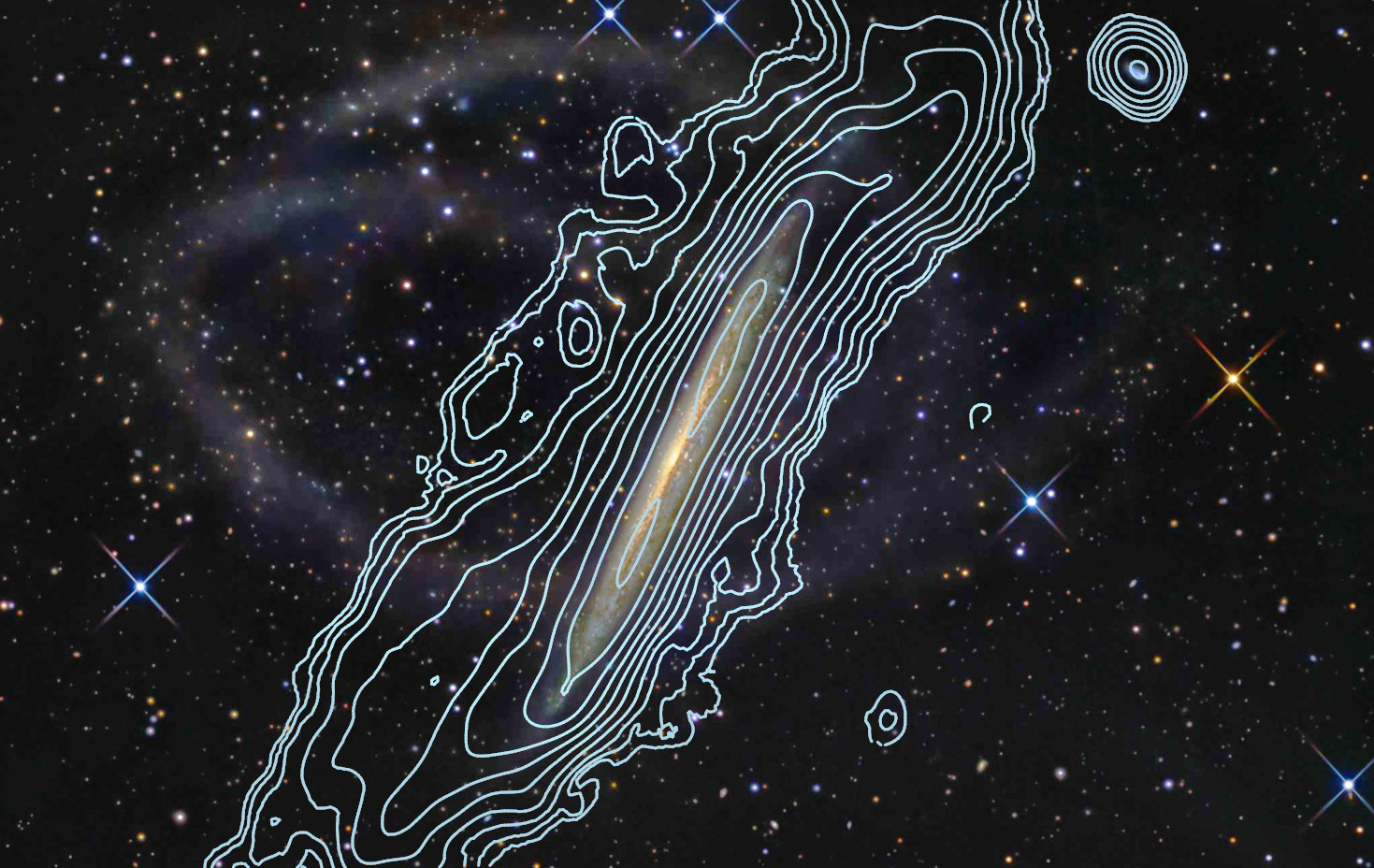Daily Image
27-03-2009The classic warp of NGC 5907 revisited
| Submitter: | Elizaveta Rastorgueva & Tom Oosterloo |
| Description: | Bending of galactic discs, a.k.a. warps, occur in most spiral galaxies, including the Milky Way. Their origin is still unclear. They could result from an interaction with close companion galaxies, or from accretion of intergalactic gas. NGC 5907 is a true-blue Westerbork Classic. It became known as a warped galaxy since the first observations of its neutral hydrogen that were published in a seminal paper by Renzo Sancisi in 1976, and since then it is one of the proto-type warped galaxies. Its HI shape, as deduced from these old observations, is a classical example of the S-shaped symmetrical warp present in isolated galaxies. Later, however, two small companions of NGC 5907 were discovered so NGC 5907 turned out to be not so isolated at all. Other signs of recent or ongoing interactions were discovered in deep optical images obtained at the Blackbird Observatory (by Martinez-Delgado et al; see image): beautiful stellar streams with a complex rosette-like shape surrounding the galactic disk. Those streams are the traces of a smaller galaxy this has been completely disrupted in the interaction. To unravel whether this proto-type warp is due to interaction or due to accretion, ultra-deep WSRT observations of the neutral hydrogen are underway. First results are very promising. The contours shown are the result of the combination of the first five 12-hour observing runs. Twelve more observations will follow. The resulting total HI map (contours) is overlaid on the deep optical image. The deep HI data reveal a striking asymmetry of the HI distribution, not seen in the earlier observations, so the character of the warp has changed. Moreover, the small remnant of the galaxy that gave rise to the stellar streams is also detected in HI. Since the morphology and kinematics of the stream are now detected, we will be able to accurately model the interaction and see whether that interaction can have caused the warp. Acknowledgement: Elizaveta would like to thank the SKADS Marie Curie Conferences and Training program for financial support. |
| Copyright: | Astron |
| Tweet |  |
